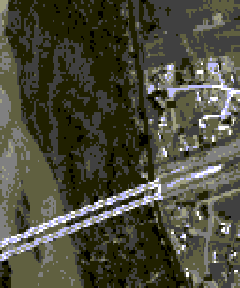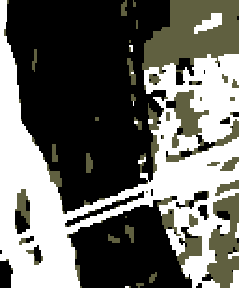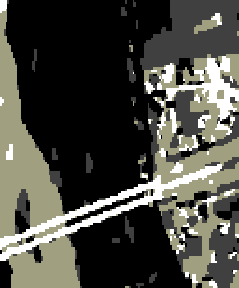 (b)
(b) (c)
(c)
Markovian approaches to early vision processes need a huge amount of computing power. These algorithms can usually be implemented on parallel computing structures. Herein, we show that the Markovian labeling approach can be implemented in fully parallel cellular network architectures, using simple functions and data representations. This makes possible to implement our model in parallel imaging VLSI chips.
As an example, we have developed a simplified statistical image segmentation algorithm for the Cellular Neural/Nonlinear Networks Universal Machine (CNN-UM), which is a new image processing tool, containing thousands of cells with analog dynamics, local memories and processing units. The Modified Metropolis Dynamics (MMD) optimization method can be implemented into the raw analog architecture of the CNN-UM.
We can introduce the whole pseudo-stochastic segmentation process in the CNN architecture using 8 memories/cell. We use simple arithmetic functions (addition, multiplication), equality-test between neighboring pixels and very simple nonlinear output functions (step, jigsaw). With this architecture, the proposed VLSI CNN chip can execute a pseudo-stochastic relaxation algorithm of about 100 iterations in about 100 microsecs.
In the suggested solution the segmentation is unsupervised, where a pixel-level statistical estimation model is used. We have tested different monogrid and multigrid architectures. In our CNN-UM model several complex preprocessing steps can be involved, such as texture-classification or anisotropic diffusion. With these preprocessing steps, our fully parallel cellular system may work as a high-level image segmentation machine, using only simple functions based on the close-neighborhood of a pixel.
(a)  (b)
(b) (c)
(c)
(a) Air view of a scene with river, bridge, forest, green area and town (from left to right). Rio Grande, New Mexico. Segmented into: (b) 3 regions, (c) 4 regions.